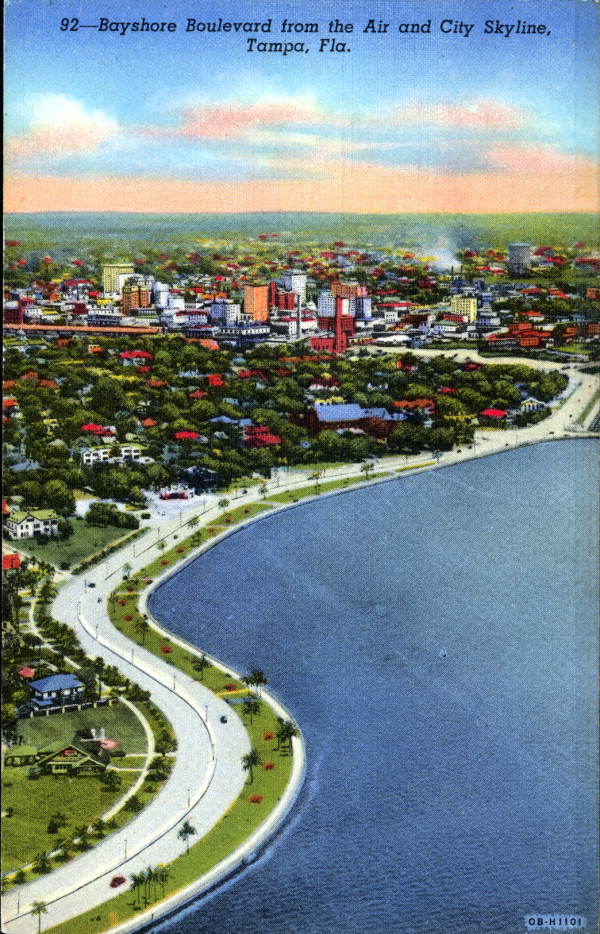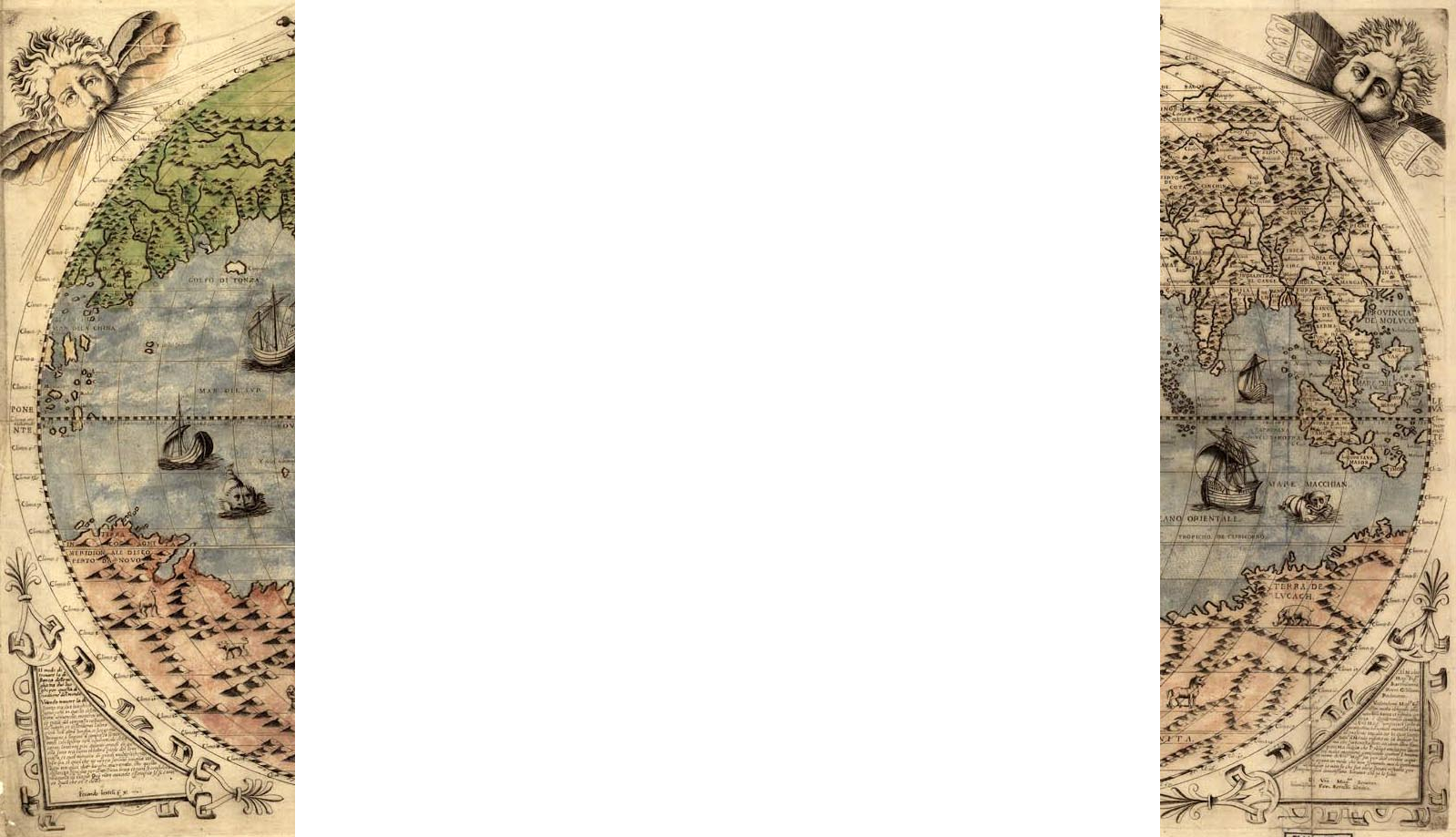
Bayshore Boulevard from the Air and City Skyline – Tampa, Florida . 19–. Color postcard, 6 x 4 in. State Archives of Florida, Florida Memory. <https://www.floridamemory.com/items/show/163570>, accessed 21 March 2018.
Tampa is a curious place in a curious state. The city has no gulf beach despite being the left-coast’s biggest city and a popular tourist destination. Tampa is diverse enough to host the Republican National Convention, and also hosts an annual Pirate Invasion in which the Mayor surrenders the city keys to bands of marauding lawyers, physicians, and bankers. A city that can host a Fetish Convention and the Republican National Convention in the same month knows its limits and assets. One of the most interesting parts of Tampa is Ybor City. One of Tampa’s oldest and most diverse neighborhoods, Ybor is an anomalous mix of Italians, Cubans, African Americans, Bahamians, and Southern whites. Named for cigar magnate Vicente Ybor, an international cadre of workers rolled cigars shoulder to shoulder long before the trouncing of Jim Crow. Today guava pastry, platanos maduros, gnocchi, collard greens, and rocket-powered shots of coffee are as common as guyabaras and cuestra reys.
A mere boliche ball toss away from Ybor City is Hyde Park, a tony enclave of white gentrification and mass-market pseudo-sophistication. Tightly stretched women and seer-suckered men parade dogs, cars, and children along the oak shaded avenues. Quaintly eclectic restaurants serve mojitos muddled by subtly accented and sufficiently handsome waiters, while energetic valets ease six figure automobiles into gated parking spaces. The residences of Hyde Park are some of Tampa’s oldest and finest examples of urban design. A mixture of Southern bungalow, plantation mansion, and Mediterranean villa, the neighborhood offers some of the best driving and peeping on the other 1%. Hyde Park’s urban chic seeps out into the public along Bayshore Boulevard, an almost 5 mile stretch of the best architecture money can’t buy.
Despite imposing houses and obsessively manicured lawns the real fame of Bayshore Boulevard is not in it occupants, but in its infrastructure. It’s sidewalk and balustrade to be exact. Tampa touts the claim that Bayshore Boulevard’s four and a half mile sidewalk is the longest continuous sidewalk in the world. Paved on the bayside of the boulevard and framed by Moorish column railings the Bayshore Boulevard sidewalk is a haven for joggers, walkers, cyclists, and curiosity seekers. That’s right. The sidewalk-a paved conveyance-is an actual tourist destination. Ah, only in Florida, right? This casual dismissal ignores Florida’s long history of creating tourism opportunities out of the mere luck of waking up in a tropical latitude.
Florida took full advantage of Franklin Delano Roosevelt’s depression era alphabet soup of recovery programs. Florida’s famed Key West was brought back from the brink of certain extinction by a concerted effort by the CCC and WPA artists and writers. Roads were rebuilt, the infrastructure was repaired, murals were painted, and guidebooks were written. In one year Key West’s tourism trade increased by more than 400%. Today, it is commonplace to see bridges, roads, and sidewalk that were built by the ‘CCC boys.’ Parks were established, beaches were nourished, and Florida was advertised as a destination away from the terrors of the depression.
Today, boasting of the world’s longest sidewalk may seem a lackluster claim. After all, it’s just a lot of divided concrete slabs. Beneath those slabs is the idea that hard work and community building can flourish into unimagined enduring value. More than the longest sidewalk, Bayshore Boulevard was 4 ½ miles of rent, groceries and pride for depression era men. Was it folly; a 4 ½ sidewalk to essentially nowhere? Perhaps, but is it not the foolish, the superfluous, and the ancillary that transforms merely existing into living in paradise.






